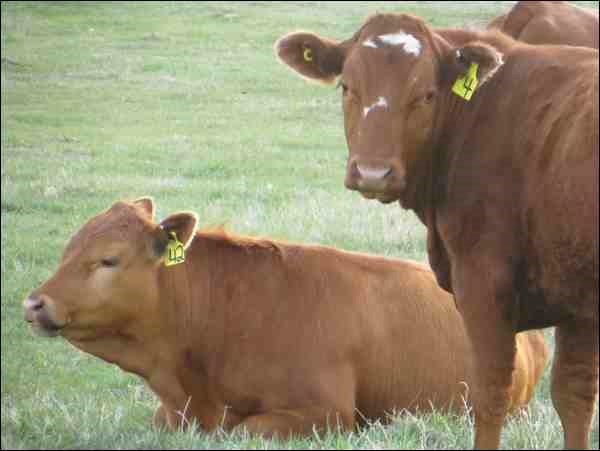As a result of another long winter, many producers are low on feed and many will be placing cattle onto early spring pasture. When pastures are grazed too early, the available forages are soon depleted. Cattle begin to feed on other early growing plants to supplement their diets.
Several varieties of poisonous plants are common to pastures in this area. Poisonous plants common to hillside draws include Death Camas and Chokecherries. Larkspur is also found in these areas but is uncommon.
Death Camas is a slender perennial herb with V-shaped grass-like leaves. It grows 8 to 16 inches tall and has many creamy-yellow flowers. The plant grows from a bulb which resembles an onion. It is often confused with wild onion which has pink flowers and an onion odour.
Chokecherry plants are most toxic during spring and early summer. They become more toxic under dry growing conditions.
Poisonous plants common to hillsides and open pasture include Early Yellow Locoweed and Narrow-leaved Milk-vetch. Locoweed is a low growing member of the pea family. The plants have a deep taproot and leaves are comprised of seven to 21 leaflets. Flowers are yellowish in colour.
Narrow-leaved Milk-vetch appears as a semi-erect branched herb that grows one to two feet tall with noticeable cream-colored flowers. Milk-vetches usually indicate that the soil contains high levels of Selenium. The plants accumulate inorganic Selenium to levels as high as 8,000 parts per million. The result of cattle eating Milk-vetch is Selenium poisoning.
Alkaline sloughs and wet areas are home to Arrow-grass. This rush-like herb grows six to 30 inches in length. The newer leaves are smooth, shiny, bright green, clumped and unbranched. The flower stalks are taller. The small clustered flowers are greenish in colour. Young new leaves are more poisonous than the older parts of the plant.
Marshy sloughs, wet meadows and stream banks are home to the most deadly plant of the region, the Western Water Hemlock. Water Hemlock grows two to six feet tall. The large alternate doubly compound leaves have saw-toothed edges. The leaf veins end near the notches of the leaflets. The tuberous rootstock contains an extremely poisonous yellowish oil. One root can kill a mature cow.
It is hard to treat poisoned cattle. Most often, they are found dead. Learn how to identify and recognize poisonous range plants. Try to minimize the availability of those plants to cattle.
The publication, Stock-Poisoning Plants of Western Canada, is available on-line. It is still an excellent reference in identifying poisonous plants.
For more information on this, or other forage related topics, contact Bryan Doig at 306-446-7477 or the Agriculture Knowledge Centre at 1-866-457-2377.
- Doig is Provincial Feeds/Regional Forage Specialist with the North Battleford Regional Services Branch, Saskatchewan Ministry of Agriculture




